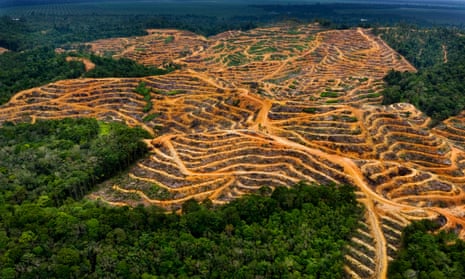We live in an era of great contrasts. Never before have we faced catastrophic environmental risks on a planetary level, and seldom has there been such potential for innovation to allow us to avert serious risks and transform the world. Decisions made now will have profound impacts on the Earth for centuries to come. This calls for a new logic; abundance within planetary boundaries.
Despite its obvious contradiction, we assume infinite material growth on a finite planet. This persistent “frontiers” worldview originates from the assumption that we are a relatively small world evolving on a relatively large planet. It’s easy to see why this was true up until the late 1980s, and Earth had the resilience to take whatever we threw at it.
Not any more. Since the early 90s the world has entered a new state. We have reached a saturation point in terms of human pressures on the planet. The planet is starting to send invoices back to the economy. We have a mountain of evidence to show that Earth has entered a new geological epoch, the anthropocene, where we, humanity, constitute the largest force of change on the planet.
The drama is that Earth responds in surprising ways to our exponential rise in pressure. Instead of incremental change, it can cross tipping points where we can expect abrupt and often irreversible change. This applies to the collapse of fish stocks, the desertification of land, and accelerated melting of ice sheets. Pushing the planet too far may cause a feedback loop just like when a loud speaker situated too near to a microphone causes the volume to rise uncontrollably. If Earth enters such a loop we could lurch dramatically away from the extraordinarily stable environmental conditions we have been blessed with over the past 10,000 years. This would seem unwise.
We need to locate a safe operating space for humanity to thrive, and now we have a framework for this operating space: planetary boundaries. Since its publication in 2009, the planetary boundaries framework, which identified nine boundaries we should remain within, has faced intense scientific scrutiny and triggered widespread interest from organisations like WWF and Oxfam as well as business and policy. In January we confirmed the original analysis of the stability and resilience of our life-support systems on Earth. Unfortunately, the latest update indicates that humanity has transgressed four of the nine boundaries – climate, biodiversity, deforestation and the linked nitrogen and phosphorus cycles.
The world is listening. The UN, World Bank, OECD, World Economic Forum and the IMF all conclude that global sustainability is now a prerequisite to alleviating poverty and securing economic development. The World Business Council for Sustainable Development (WBCSD) has adopted the planetary boundaries research and translated its Vision 2050 to an Action 2020 strategy, where planetary boundaries are transformed to an actionable roadmap for business.
We have an opportunity for exponential transformation. In September this year, nations will agree the universal sustainable development goals (SDG), to replace the millennium development goals that end this year. It is the first attempt to set global goals for people and the planet – the new development paradigm.
These are very promising signs. In fact, the planetary boundaries framework may be one of the most optimistic. It suggests we can now define a safe operating space for world development.
These insights arise at the take-off point for potentially dramatic improvements in human wellbeing as we enter the new era of exponential technologies, from the digital revolution to harvesting benefits from nano-technology and molecular biology. What can create better incentives for fundamental breakthroughs than bounding innovation with planetary boundaries? We can now, for the first time, integrate two grand concepts: attaining abundance and honouring everyone’s right to development in the second machine age, while safeguarding a stable and resilient home.
Transformation must start within the next five to ten years to avoid potentially unmanageable risks. This makes 2015 a uniquely important year. Not once, not twice, but three times, will world leaders meet to chart the course for sustainable development; first in Addis Ababa in July on finance for development, then in New York in September on the SDGs, and finally in Paris in December on a global climate deal. It is not likely to happen again for maybe ten years. This is an opportunity we cannot afford to miss.
The leadership hub is funded by Xyntéo. All content is editorially independent except for pieces labelled ‘brought to you by’. Find out more here
Join the community of sustainability professionals and experts. Become a GSB member to get more stories like this direct to your inbox.
